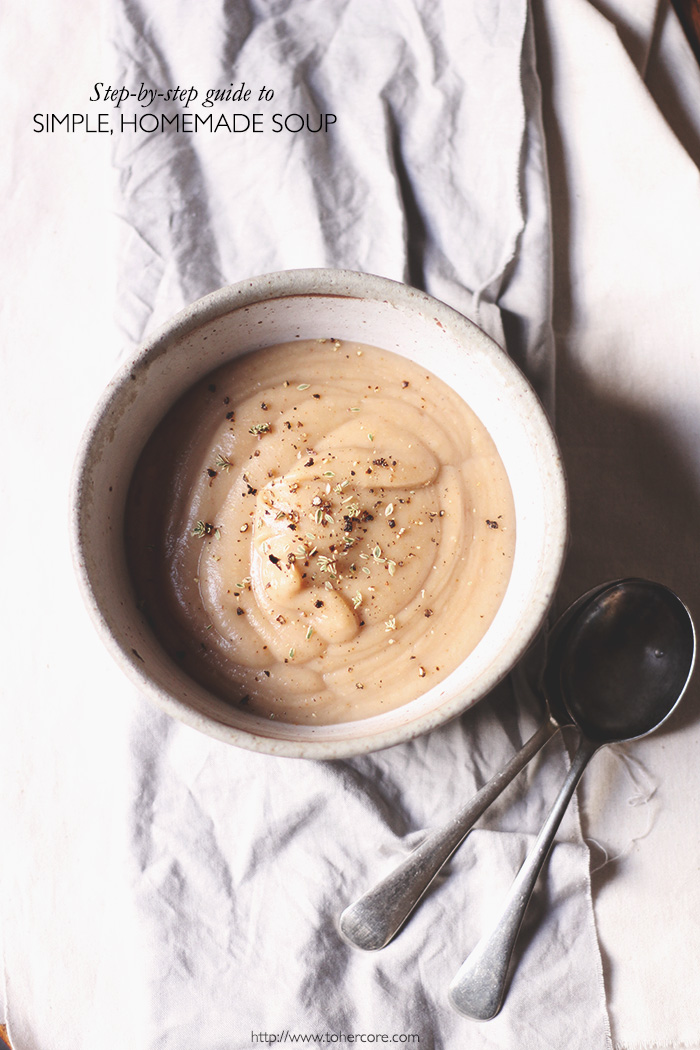
You may have guessed from all the soup recipes on here that I’m a bit of a fan. Soup has many great qualities and is such a versatile dish – with simple, fail-proof methods for the novice cook through to the more in-depth and technical varieties that hold their own against fancier dishes through their complex flavours and textures.
I rarely follow a recipe when making a soup. Sometimes I will use specific ingredients and flavours with an end result in mind, other times I will just make a big pot of soup using whatever ingredients I have on hand (we call this “refigerator soup” in our house – I’m sure you can guess why! ;) But regardless of the intention, the method is usually fairly similar, and once you have the basic measurements and process down pat, you’re then armed with a fool-proof recipe to be able to make any type of soup you want – and a great way to use up those veegies on their last legs at the back of the fridge!
Step 1 – Pick your veggies
You’ll want about 500g (1 pound) of veggies which you’ll need to scrub, peel and roughly chop. Vegetables that take a little longer to cook like potato, sweet potato and carrot, you will want to chop slightly smaller than usual. Don’t stress on this point too much though, especially if you are planning on pureeing the soup at the end.
Step 2 – Roast your veggies (optional)
Roasting vegetables adds a great depth of flavour to the soup and adds a lovely warmth and slight sweetness to the soup from the vegetables caramlising. You can roast almost any vegetable before adding to a soup, but the obvious choices are pumpkin, parsnip, sweet potato, carrot, cauliflower and onion.
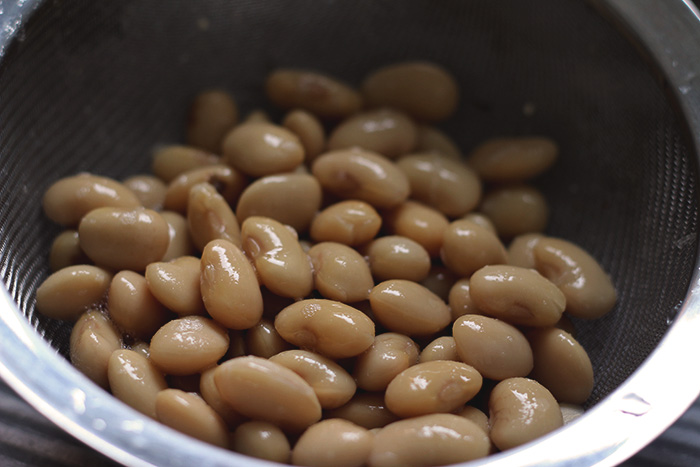
Step 3 – Choose your protein (optional)
You can definitely keep your soup entirely vegetable, however for something a little more hearty I like to add in some beans or lentils. If I have the time I’ll cook the beans first, but if making the soup midweek, I’ll just throw in a can of drained beans.
Step 4 – Whats your flava?
At a very minimum, I would suggest adding a little chopped garlic to your soup. You may also wish to use some onion or leek. After this, it’s completely up to you and how adventurous you are feeling. Choose two or more flavours from the below groups to flavour your soup. Or to keep things a little more traditional, go with just stock, salt and pepper. You can always add a little lemon juice or flavoured oil at the end if you wish.
For south-eastern asian flavours, try fresh chilli, corander root, fresh ginger, lime, lemon grass, thai basil and fresh coriander.
For Indian flavours, try cumin, ground coriander, dried chilli, turmeric, garam masala and dried ginger.
For a Moroccan/Middle-Eastern influenced soup try cinnamnon, saffron, cumin, lemon, turmeric, ground ginger, fresh parsley and mint.
For Mediterranean style soup, try fresh basil, garlic, red wine vinegar, dried oregano, thyme and olive oil.
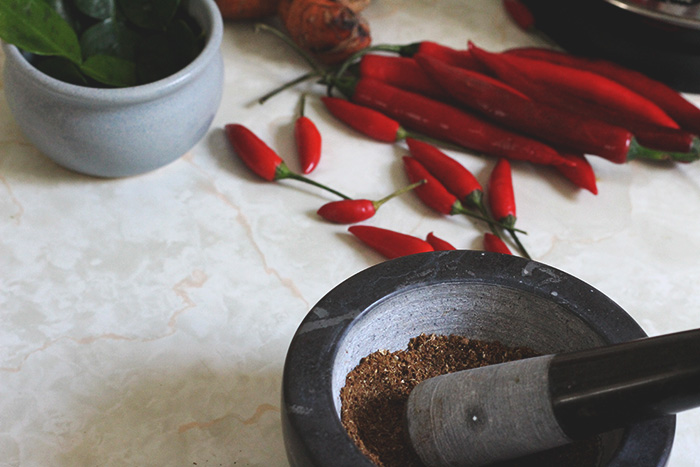
Step 5 – Start simmering!
The easiest way to cook soup is to simple place the vegetables you want to use in a pot, cover with vegetable stock and simmer until the vegetables are tender. As a rough guide, use 4 to 6 cups of liquid for every 500g of vegetables. If you’d like a creamier soup and wish to add a little milk or cream later on, cut make the amount of liquid at this point accordingly.
The coocking time will depend on what vegetables you are using and whether you have roasted them or not first. If you have, you will only need to cook around 10 – 15 minutes. Otherwise, start checking after around 25 – 30 minutes. Once the vegetables are tender and the lentils (if using) are soft, remove from the heat.
Step 6 – Smooth or chunky (optional)
Once the soup has cooled slightly, use a stand or hand blender to puree it. You can either puree all of the soup or just some of it so that it has a creamier base but a little texture as well. If you wish to add a little milk or cream (dairy, nut or coconut – I prefer coconut), do it at this point.
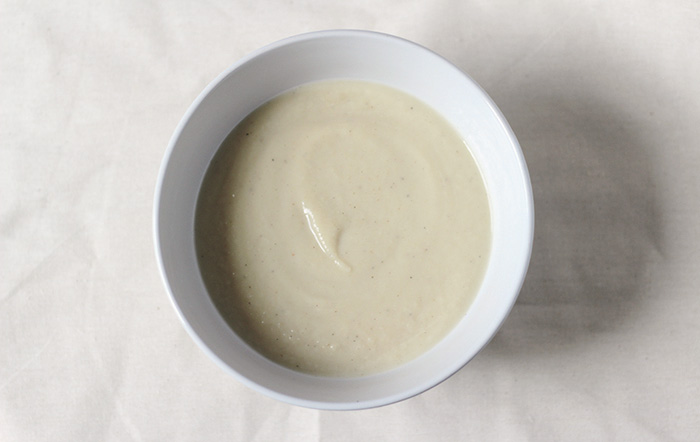
See more soup recipes from To Her Core
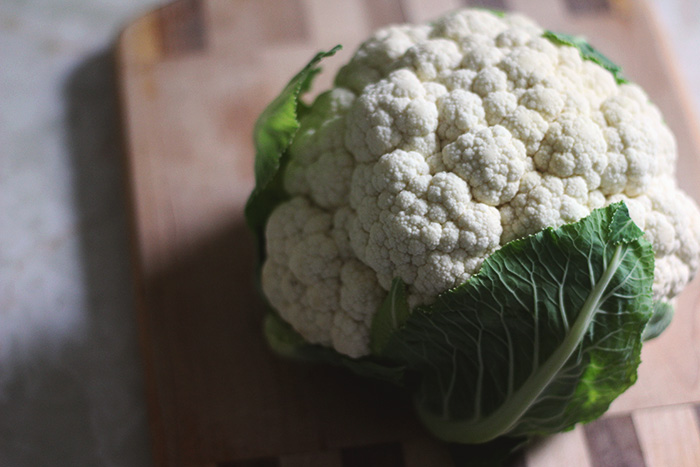



This soup looks so creamy! I am yet to make soup this season, I know its a terrible isn’t it! This post is super healthy and will help me get my soup on :)
I love this guide so much! Mainly because I almost always make refrigerator soups (some better than others…). I’ll use this guide next time (when it gets a little cooler here) :) Thanks for yet another lovely post!
You’ve made soup-making feel so accessible for the busiest of weeknights. They really are the perfect clean-out-your-fridge meal and method. Enjoy Bali Dearna!
Thanks so much Katie x